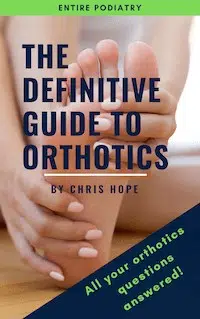How many times have you stubbed your toe and winced from the pain? It hurts, right? The pain may be so severe that you think you’ve broken your toe. But other than trying to take your mind off the pain, should you be doing anything to help your broken toe heal?
It’s commonly thought that there’s not a lot you can do for a broken toe except give it time to heal. All fractures need time to heal and for a broken toe the healing process can take up to 6-12 weeks, depending on the type of fracture as well as your age. But there are also things that you need to look out for in order to ensure that your broken toe heals properly, and to prevent the development of longer term problems such as arthritis.
What is a toe fracture and does it need treatment?
Toe bones can be fractured from any sort of trauma, such as stubbing your toes or dropping something heavy on your toes. In the past you may have heard people say that “there’s nothing you can do about a broken toe”, but this is not always the case. If not treated properly, a broken toe can cause long-term pain, swelling and arthritis.
For this reason, if you suspect you have a broken toe we would always recommend an evaluation to ensure that you receive the right treatment.
How is a toe fracture treated?
If you have fractured a toe, it is important that the toe is able to heal in the correct position. This may involve wearing a splint or boot to help immobilise the involved joints.
As the fracture heals, a regime of gentle stretches and exercises may be recommended to help maintain mobility in the joints.
Tips on healing a broken toe
- Use ice to reduce pain, inflammation and swelling as soon as possible after sustaining a toe injury. This will help to speed up the healing process.
- Keep off your affected foot as much as possible and avoid putting pressure on it. Elevating the affected foot is also helpful to reduce swelling.
- Consider taking an anti-inflammatory pain medication such as Nurofen. This can not only help with the pain but also in reducing inflammation and swelling.
- Try buddy-taping the affected toe to the largest adjacent non-broken toe, to encourage proper alignment of the broken toe during healing. This can also help to reduce pain through immobilising the broken toe. When buddy-taping, it’s important to use gauze or a cotton ball between the toes that are being taped together to prevent breakdown of the skin and possible infection.
- Wear supportive shoes with a rigid sole while your toe is healing. Supportive shoes will minimise strain on your foot and help to protect your toe from further injury. Your podiatrist may recommend a splint or special boot to help immobilise the joints around your toe and speed up the healing process.
- Although immobilising the joints is important to speed up the healing process, it’s important that this occurs in combination with gentle stretches and exercises to maintain range of movement and minimise swelling. Initially this may involve passive exercises, progressing on to more active exercises as your fracture heals.
If you suspect a broken toe, it’s best to see a podiatrist for assessment and treatment to prevent complications. You podiatrist can coordinate an x-ray to determine the nature and exact location of the fracture. X-ray will also establish if the fracture is displaced or non-displaced, which would then determine the best course of treatment.
At Entire Podiatry we can advise on specific footwear, splints or immobilisation boots, and individualised exercise programs to ensure the best possible healing of your broken toe.
We provide expert assessment and treatment for any toe pain. To make an appointment with one of our podiatrists, contact your nearest clinic directly or freecall 1800-4-ENTIRE.





